Sigma updates their fast 50mm F1.4 Art lens for full-frame mirrorless cameras
posted Tuesday, February 7, 2023 at 8:30 AM EDT
Browse our Sigma 50mm F1.4 DG DN Art Gallery
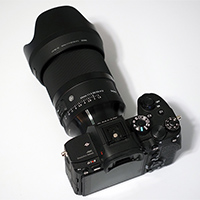
Sigma has debuted yet another reformulation of a popular, high-quality Art-series prime lens for full-frame mirrorless cameras, with the new 50mm F1.4 DG DN Art lens for Sony E-mount and L-mount cameras. Building upon the foundation of the earlier 50mm F1.4 DG HSM Art lens for DSLR systems, the new DG DN version features an all-new optical formula, a faster linear motor-based AF system, and a refreshed exterior design with a locking, de-clickable aperture ring and an AFL button. Like other Sigma "DG DN" mirrorless lenses, this new fast 50mm prime has been upgraded for improved optical quality, better AF performance and to offer a better usability experience for these modern camera systems.
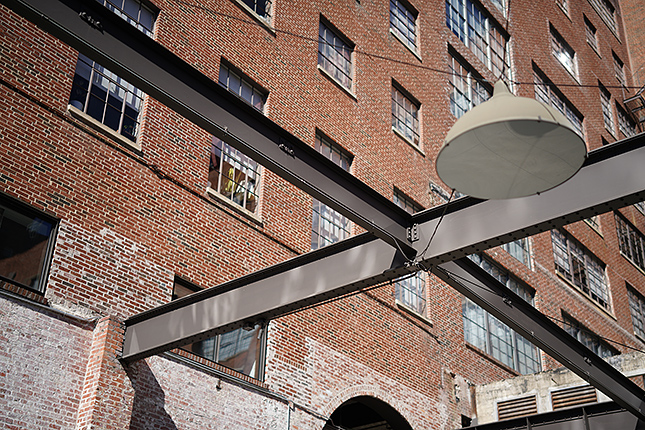
Key Features & Specs
- Professional-level, Sigma Art-series standard lens with fast F1.4 aperture
- Updated optical design with 14 elements in 11 groups
- Lens includes 3 aspherical and 1 SLD elements
- F1.4-F16 aperture range
- 11-bladed circular aperture diaphragm
- HLA linear-motor focusing system
- Manual aperture ring with locking switch and de-click toggle
- AFL button and AF/MF focus mode switch
- Weather-sealed construction
- Dimensions (L x D): 109.5mm x 78.2mm (4.3 in. x 3.1 in.)
- Weight: 670g (23.6 oz.)
- Available in Sony E-mount and L-mount
- $849 MSRP
Design & Handling
The new Sigma 50mm F1.4 DG DN Art lens shares the same general design language as previous Art series lenses, with a rugged yet sleek and modern styling with a mixture of matte on the main barrel coating and a shinier black coating on the metal lens mount area. The majority of the lens, including the large focusing ring and aperture ring, are covered in ridged texturing, making it easy to grip and hold the lens pretty much anywhere. I've not noticed many lenses having a "grip area" on a non-movable portion of the lens barrel, but the Sigma 50mm F1.4 has some gripped texturing along the underside and around the right side of the barrel piece between the focus ring and aperture ring -- a nice little attention to detail, I think. There's also a little soft-touch coating around the rim of the locking snap-on lens hood, and a thin ridged ring on the hood, too. A nice touch!
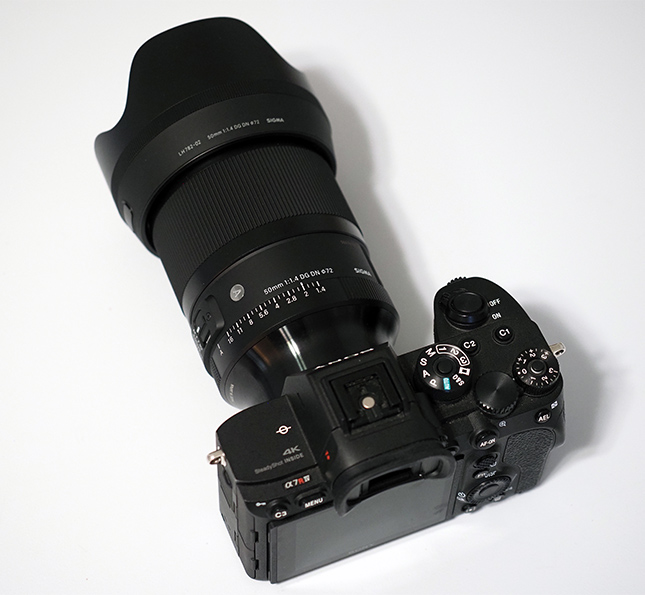
While this new Sigma 50mm Art lens takes after the original "DG HSM" version that Sigma made for DSLR cameras, this new mirrorless features an updated design both inside and out. The lens is still somewhat large for a 50mm F1.4 full-frame lens, but this new DG DN model is quite a bit lighter than the DSLR version, coming in at 670g compared to 810g with the older model. However, this mirrorless version is ever-so-slightly longer than the older model. According to Sigma, one of the ways in which they achieved weight reduction was by optimizing the optical layout and using a lighter focusing lens.
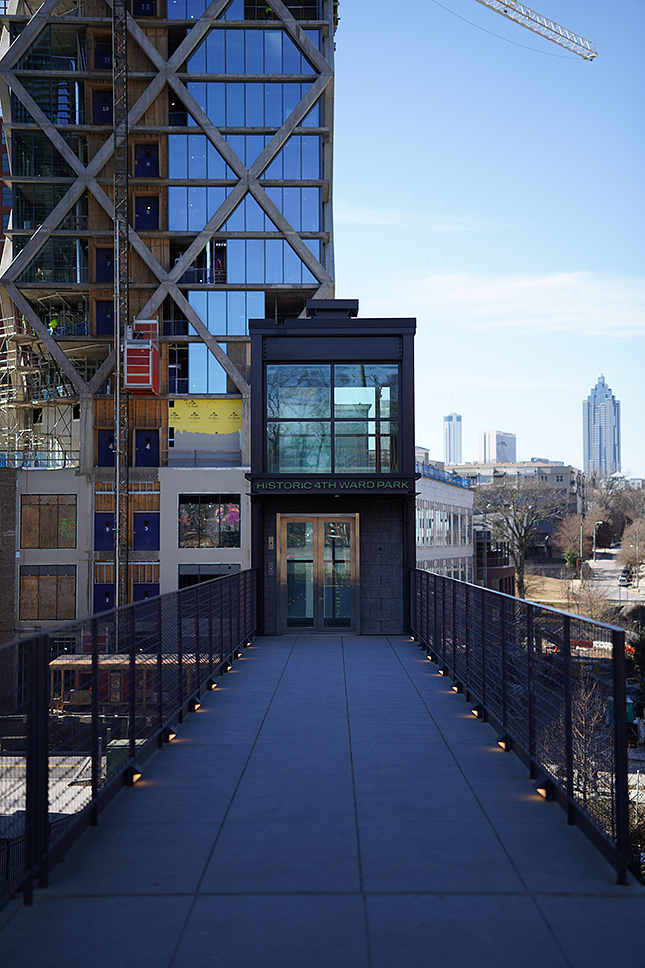
In the hand, despite the somewhat large and heavy(ish) design, the lens feels fantastic. Mounted to a Sony A7R IV, the combination is comfortable and balanced, with no feeling of front-heaviness at all. The Sigma 50mm F1.4 and the Sony A7R IV are certainly not an "ultra-compact" combination by any means, but the pairing still felt easy to carry around and very portable. The build quality, too, is excellent, just as I've experienced with other Sigma Art-series lenses.
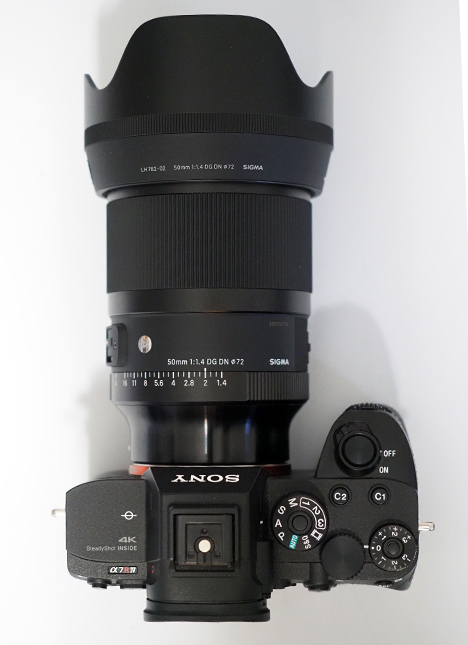
I seem to always back to the phrase "built like a tank" whenever I use Sigma lenses, especially their Art and Sports series lenses, and this new Art series prime is no exception. Though Sigma's specs don't specify, the 50mm F1.4 DG DN lens is likely constructed of a combination of materials, namely their Thermally Stable Composite material and another metal material. The lens feels as if it's made of metal, and the construction is top-notch. Everything feels solid and high-quality. The large focusing ring is buttery-smooth and has a nice amount of rotational resistance.
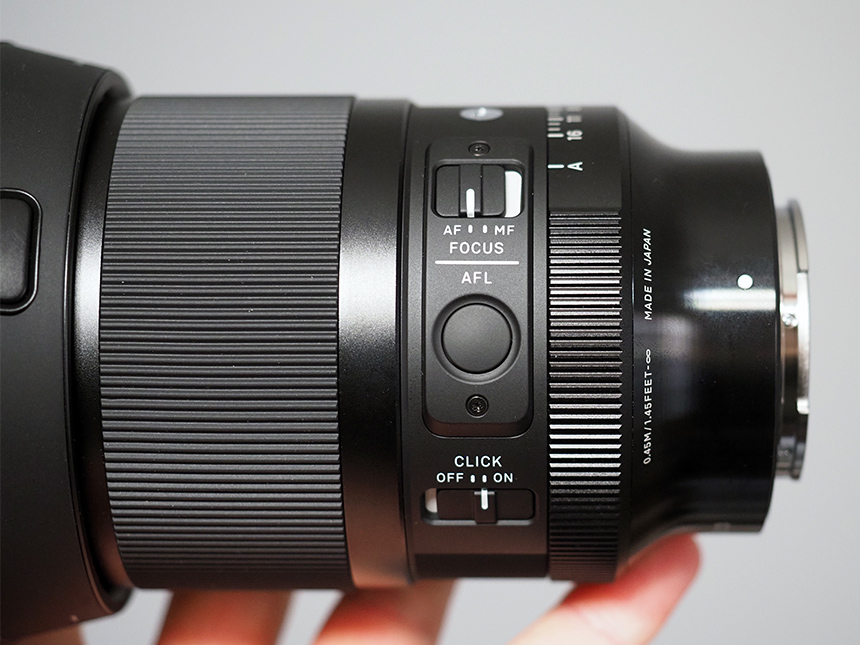
The aperture ring also rotates with a nice precision. The aperture markings have light but solid-feeling detents at third-stop increments. There is also a de-click toggle, which lets the aperture ring make smooth iris adjustments, making this lens a good option for video shooters, too. There's also a locking switch for the aperture ring, which locks the aperture ring into the A (auto) position. This helps prevent accidental aperture changes (the A position allows for manual aperture control via the attached camera). Interestingly, the lock switch can still be slid into its locked position while the ring is set to any particular aperture, but the ring will not be locked into place -- it only locks when in the A position.
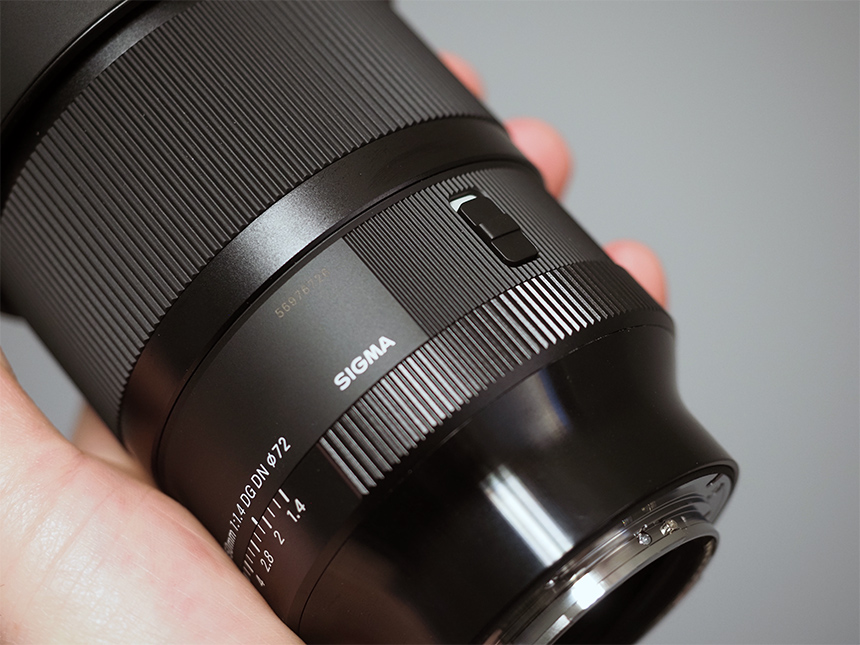
As mentioned earlier, the Sigma 50mm F1.4 DG DN Art lens features a throughout dust- and splash-resistant construction, including a rubbery gasket around the lens mount. The lens also has a water- and oil-resistant coating applied to the front element.
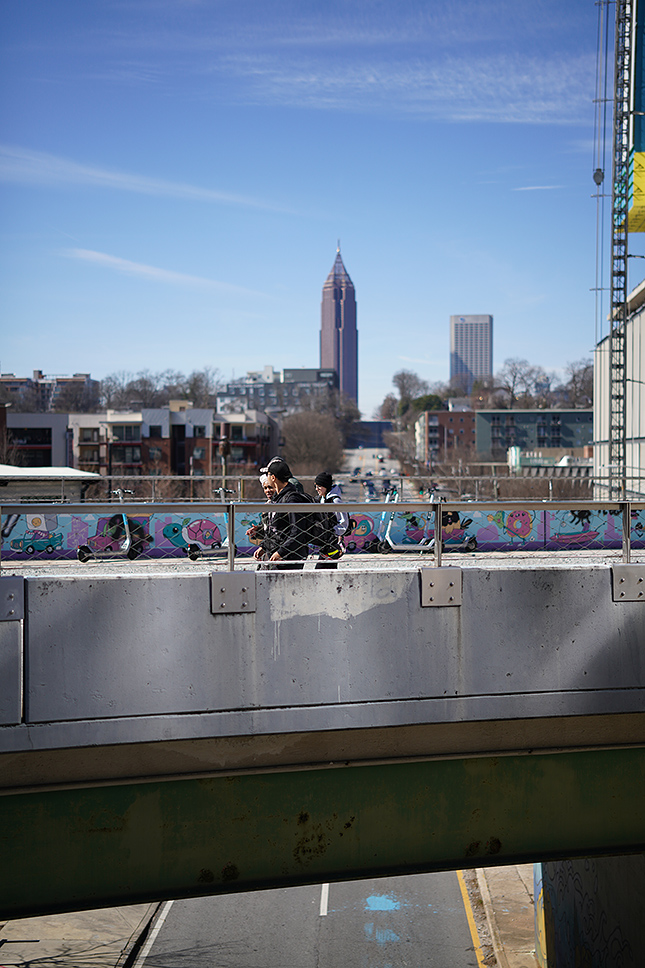
Optics
In terms of the optical layout, this is another area of difference compared to the DSLR version from a few years ago. Despite being lighter than the older model, this new lens, in fact, uses more optical elements, albeit just one more. The new lens uses 14 total elements, whereas the DG HSM Art has 13 elements. These 14 elements are arranged into 11 groups, and the lens includes three aspherical elements and a single SLD (special low dispersion) element. These specialized elements help to suppress astigmatism and field curvature as well as help combat chromatic aberrations. Sigma also states that sagittal coma flare has been minimized, which should help if you opt to use this lens for night-sky photography. The lens also features Super Multi-Layer Coating, which helps to reduce ghosting and flare.

Sigma says that image quality in the corners has been optimized, and in my initial impressions, this seems to be the case. While the lens I've used is running pre-production firmware -- so I am hesitant to make any final judgments on image quality at this time -- the image quality performance so far is very impressive. Even at F1.4, sharpness and detail in both the central and out into the far corners are very sharp. With a longer focal length and a fast aperture, it's easy to have a very shallow depth of field and thus capture images with a sharp subject somewhere in the central area of the frame and then have softer corners, however if you get the framing and the focus just right, you can get images with excellent sharpness across the frame.

In other areas, chromatic aberration appears well controlled, though you can see a bit of longitudinal chromatic aberration or "bokeh fringing" when shooting at F1.4. However, this is overall very minor and not all that uncommon on lenses like this. I also spotted a little bit of purple fringing on some high-contrast edges, but again this was extremely mild and I really had to pixel-peep in order to see it. (Also, please keep in mind this was a pre-production camera, so image quality could change somewhat by the time it's released.)
I also saw some vignetting at F1.4, but I am personally okay with some corner shading, especially when shooting at fast apertures. Stopping down a bit helped to eliminate the vignetting.

Autofocus
The Sigma 50mm F1.4 DG DN Art features an updated autofocusing system, switching away from the HSM, or hypersonic motor, of the DSLR version to a more modern and faster linear motor focusing system. Most of Sigma's previous "DG DN" lenses have utilized a stepping motor autofocusing system, which is both fast and quiet, but this 50mm F1.4 is the first Art-series mirrorless lens to use Sigma's newer "HLA" linear motor (High-response Linear Actuator) to power the autofocusing system. We first saw this HLA focusing motor system debut in the 60-600mm DG DN Sports lens, but now this new fast 50mm prime gets the latest AF tech, too! With this new focus motor, the AF group is directly driven with a linear motor, which should offer faster, more precise and quieter autofocusing performance. What's more, the optical layout of this 50mm F1.4 lens is designed in such a way that the "focusing group" is just one lens, a single double-sided aspheric lens. As such, the HLA focusing motor only needs to move a small, lightweight lens element, which results in very fast and responsive focusing. In the field, I found focusing to be extremely quick and responsive, with both single-shot AF and continuous AF on the Sony A7R IV.
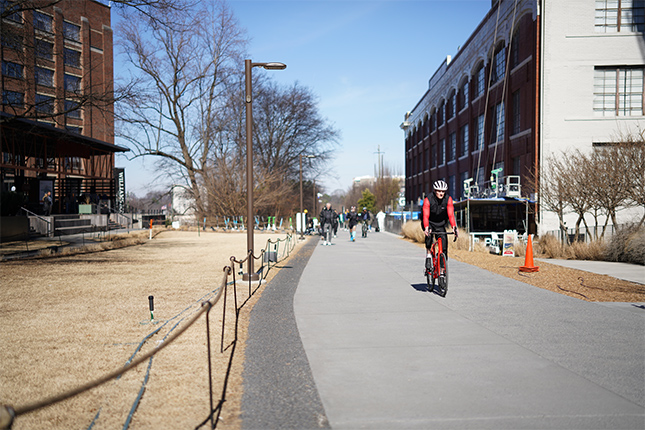
Lastly, the 50mm F1.4 DG DN Art isn't really built for macro shooting with a maximum magnification ratio of 1:6.8 and a minimum close-focusing distance of around 45cm (1.48 ft.). Likely due to the revamped optical design, the close-focusing distance is a bit longer than the older DG HSM DSLR version of this lens. Therefore it's not great for true macro shooting, but can still focus relatively close, making it great for up-close portraits, product shots, etc. In use, I do feel like the minimum focusing distance was a bit too long, and there were a few times when I tried to focus on a close-up object but had to back up due to the minimum focusing distance.
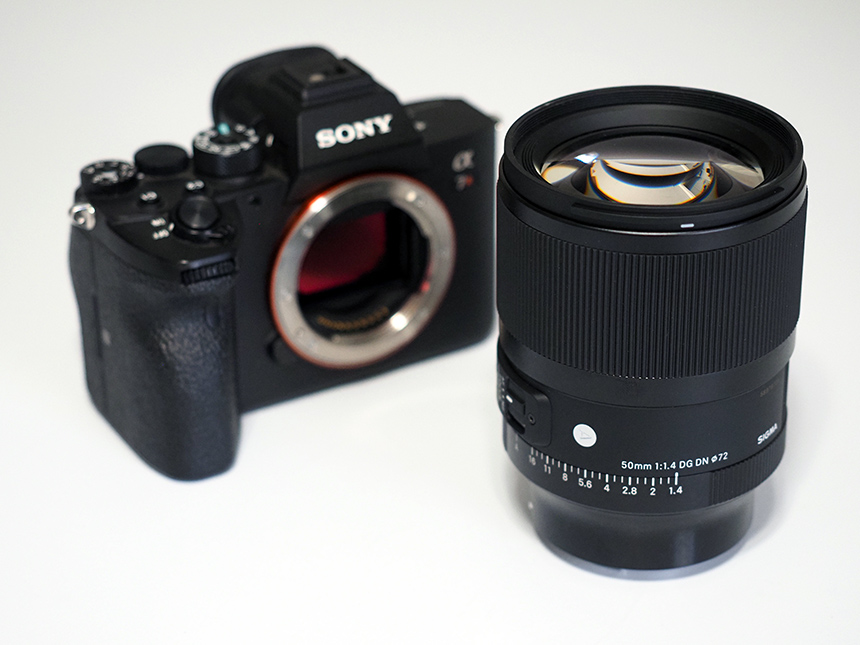
Pricing & Availability
The Sigma 50mm F1.4 DG DN Art will be available for Sony E-mount and L-Mount cameras for $849 in late February 2023.